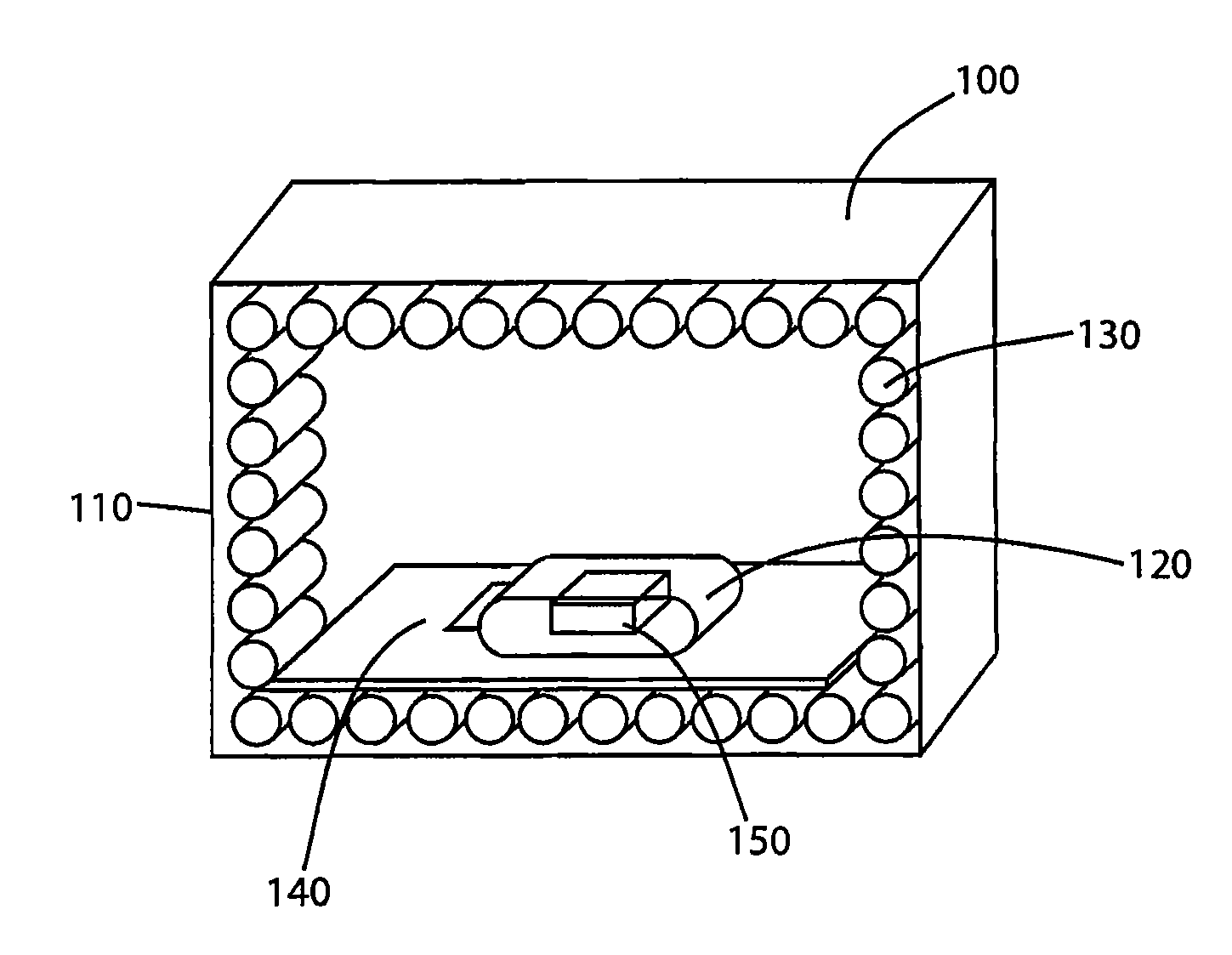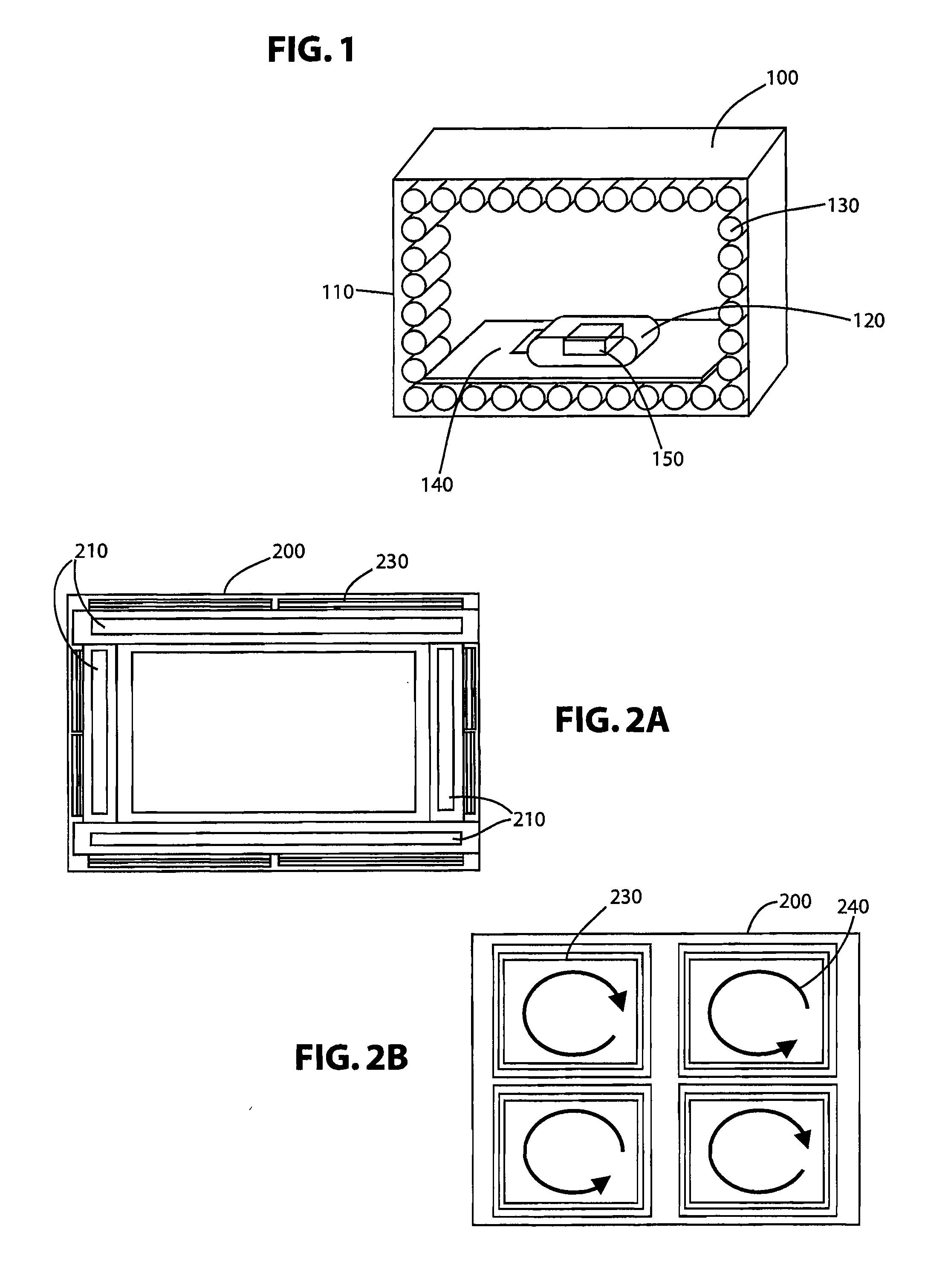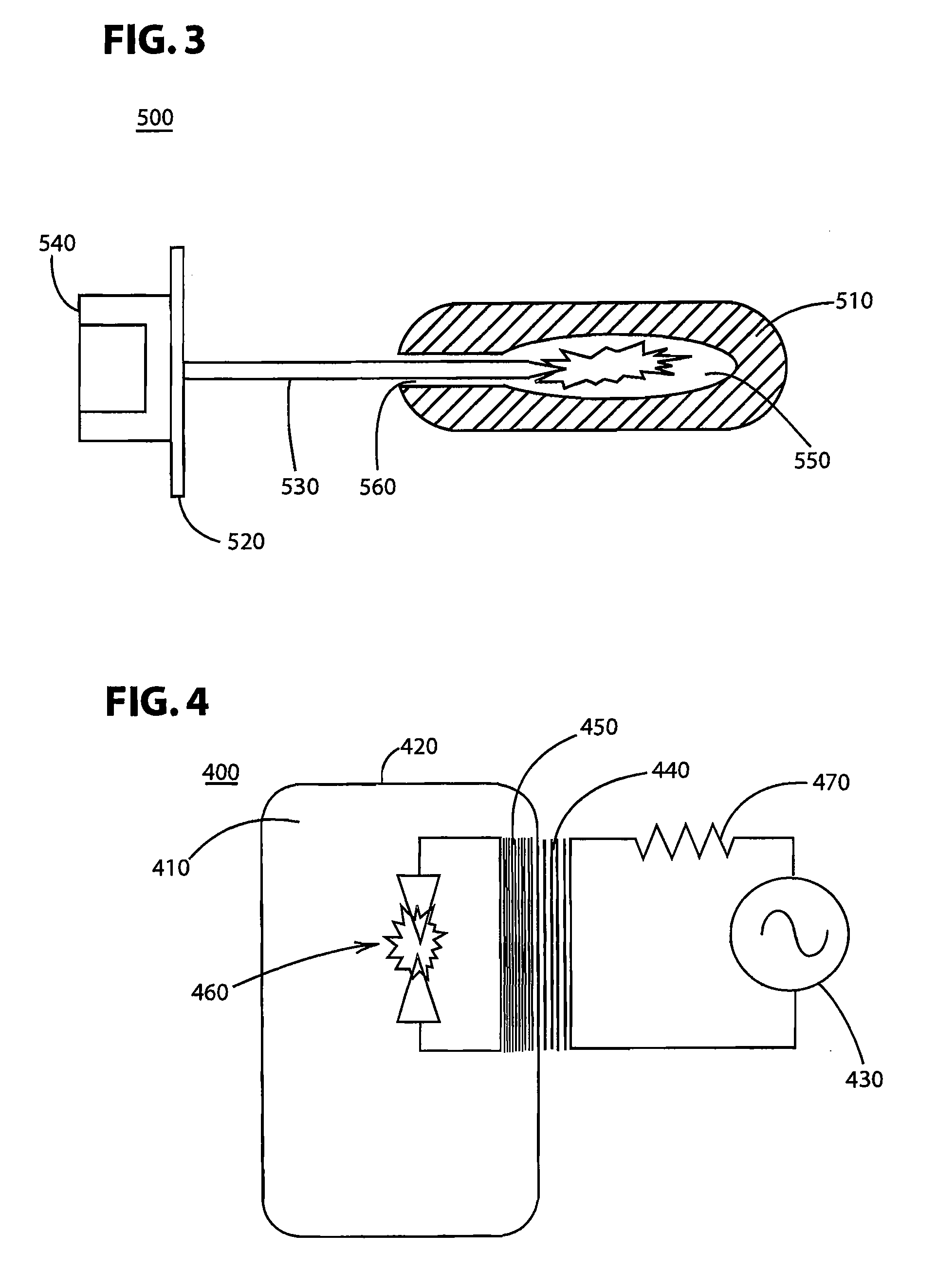Tool and tray sanitation
a technology for sanitizing tools and trays, applied in the direction of machines/engines, process and machine control, instruments, etc., can solve the problems of ineffective washing, compromising the use of instruments or tools, and requiring a lot of money and manpower for prevention and treatmen
- Summary
- Abstract
- Description
- Claims
- Application Information
AI Technical Summary
Benefits of technology
Problems solved by technology
Method used
Image
Examples
Embodiment Construction
[0024]It is possible to sanitize by deactivation of surface pathogens using germicidal radiation, such as UVC radiation, typically produced at λ253.7 nm continuously from an argon-mercury gas discharge lamp. Sanitation can also be achieved using UVC radiation from a pulsed xenon arc and other known methods.
[0025]The use of ETO gas and / or gamma ray irradiation for purposes of achieving sterility of in-pouch tools, trays, and other devices is generally known in the art. However, ETO gas and gamma-ray irradiation are inconvenient and expensive. The present invention utilizes ozone in combination with, and within a sealed storage container (e.g., a pouch), to effectively and cost-efficiently sterilize.
[0026]FIG. 1 illustrates a sterilizing box 100 into which the items 150 to be sanitized by UVC are placed. Inside the box 100 is an array of linear germicidal bulbs 130 that produce a high internal flux of UVC (i.e., radiation having a wavelength of 253.7 nm). The inner surface 110 of the ...
PUM
| Property | Measurement | Unit |
|---|---|---|
| wavelength | aaaaa | aaaaa |
| wavelength | aaaaa | aaaaa |
| temperatures | aaaaa | aaaaa |
Abstract
Description
Claims
Application Information
 Login to View More
Login to View More - R&D
- Intellectual Property
- Life Sciences
- Materials
- Tech Scout
- Unparalleled Data Quality
- Higher Quality Content
- 60% Fewer Hallucinations
Browse by: Latest US Patents, China's latest patents, Technical Efficacy Thesaurus, Application Domain, Technology Topic, Popular Technical Reports.
© 2025 PatSnap. All rights reserved.Legal|Privacy policy|Modern Slavery Act Transparency Statement|Sitemap|About US| Contact US: help@patsnap.com



